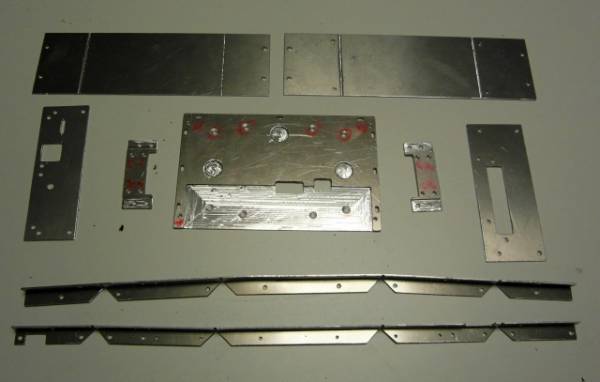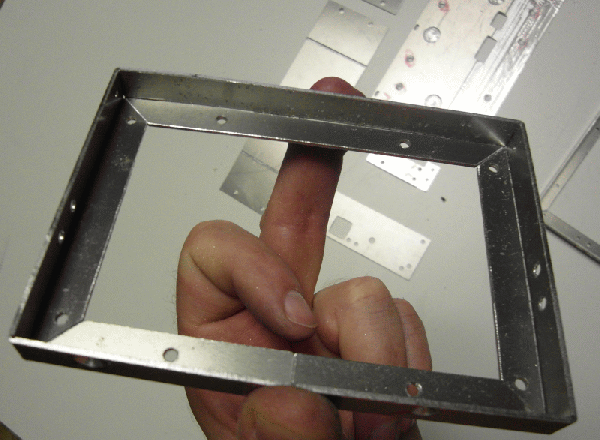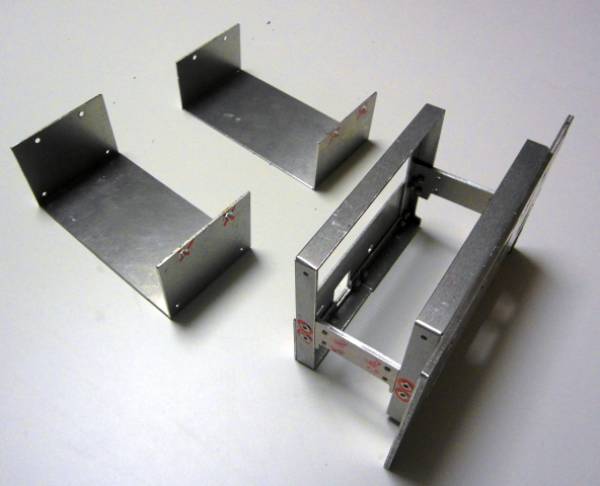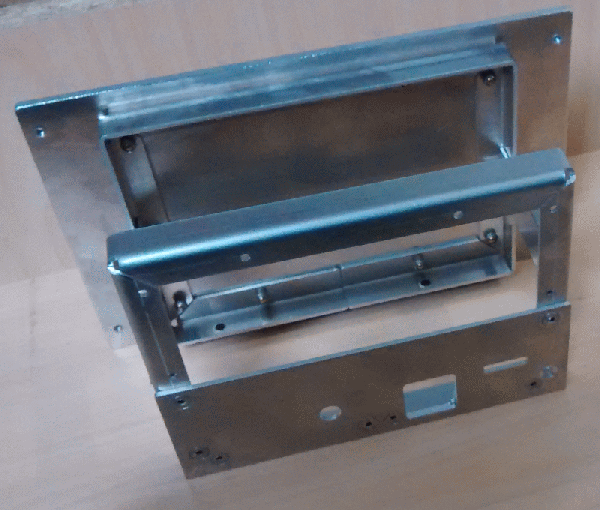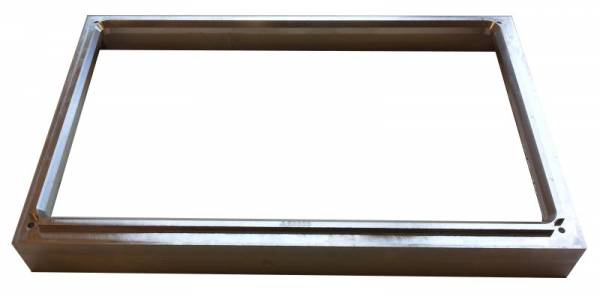Housing
You can download the DXF files for all mechanical parts here. Please keep in mind that there are several variants, depending on the display size.
All parts are designed for manufacturing on hobby CNC routers. This allows production in low quantities or even one-offs with decent quality at low costs. Maybe you have built R/C models yourself, or know someone who does? These CNC routers have become very popular with modelers in the last years. Ask around, and chances are good someone can point you to someone with access to one of these routers. Offer them a ride in a glider as a return, and maybe get a new club member eventually ![]()
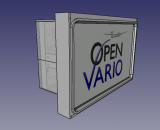 All parts of the housing except for the front frame are made from 1.5mm or 3mm aluminium sheet. All edges that need to be bent have a 2mm wide recess so you can easily bend them in a vice. If you have access to a laser cutter and a bending bench dimensions are provided as well. The DXF files are not mechanical drawings in a strict sense (with lineweights, dimensions and drawing headers etc.) but have layers chosen according to router bit diameters, cutting depths and orientation - see instructions in the DXF files for details . This allows efficient generation of cutter paths and CNC programs with most postprocessing software like BoCNC (freeware), Sheetcam (£110) or similar.
All parts of the housing except for the front frame are made from 1.5mm or 3mm aluminium sheet. All edges that need to be bent have a 2mm wide recess so you can easily bend them in a vice. If you have access to a laser cutter and a bending bench dimensions are provided as well. The DXF files are not mechanical drawings in a strict sense (with lineweights, dimensions and drawing headers etc.) but have layers chosen according to router bit diameters, cutting depths and orientation - see instructions in the DXF files for details . This allows efficient generation of cutter paths and CNC programs with most postprocessing software like BoCNC (freeware), Sheetcam (£110) or similar.
The front frame is milled from a 20mm aluminum plate, note that most of this material is removed. This needs a better (stiffer and more powerful) router or a lot of patience than what is required for the sheet metal parts. The good news is, if you are OK with mounting the flight computer on the frontside of the instrument panel (like for example the Butterfly vario, versus behind the panel as most instruments) you can do without the front frame.
The flight computer can be mounted from the frontside of the instrument panel (like for example the Butterfly vario), or from behind as most traditional instruments with an optional front frame shown above. Of course a milled aluminium front frame is not mandatory, you can also use black POM or print it with a 3-D printer.
More details about the housing and assembly are found in the assembly guide.
Have an overview about the required Aluminium Parts
Back to Build
Back to Mechanics
